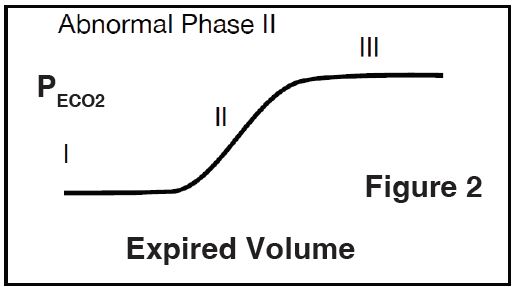

During the exposure, the following variables of steady-state gas exchange were determined (means +/- SD): breathing frequency 313 +/- 19 min-1 tidal volume, 167 +/- 21 ml total ventilation, 52 +/- 9 l.min-1 effective alveolar ventilation, 5.5 +/- 1.3 l.min-1 partial pressures (torr a, arterial E', end-tidal): PaO2, 106.2 +/- 5.9 PaCO2, 27.2 +/- 3.9 (PE'-Pa)O2, 26.0 +/- 5.3 (Pa-PE')CO2, 14.9 +/- 2.5. PO2 and PCO2 were determined in arterial blood collected from the carotid artery. Open-circuit techniques were used and PO2 and PCO2 from the tracheostomy tube were continuously monitored by mass spectrometry using a special sample-hold phase-locked gas sampling technique.

The animals had a chronic tracheostomy and an exteriorized carotid artery loop and were exposed to 27.5 degrees C ambient temperature for 2 h (65% relative humidity). To analyze the mechanisms underlying the gas exchange inefficiency during ventilation with high frequencies, steady-state pulmonary gas exchange was studied in seven conscious dogs (32 kg mean body weight) during panting elicited by mild thermal stress. Panting in animals can be expected to represent a naturally occurring physiological counterpart to today's techniques of mechanical high-frequency ventilation.


 0 kommentar(er)
0 kommentar(er)
